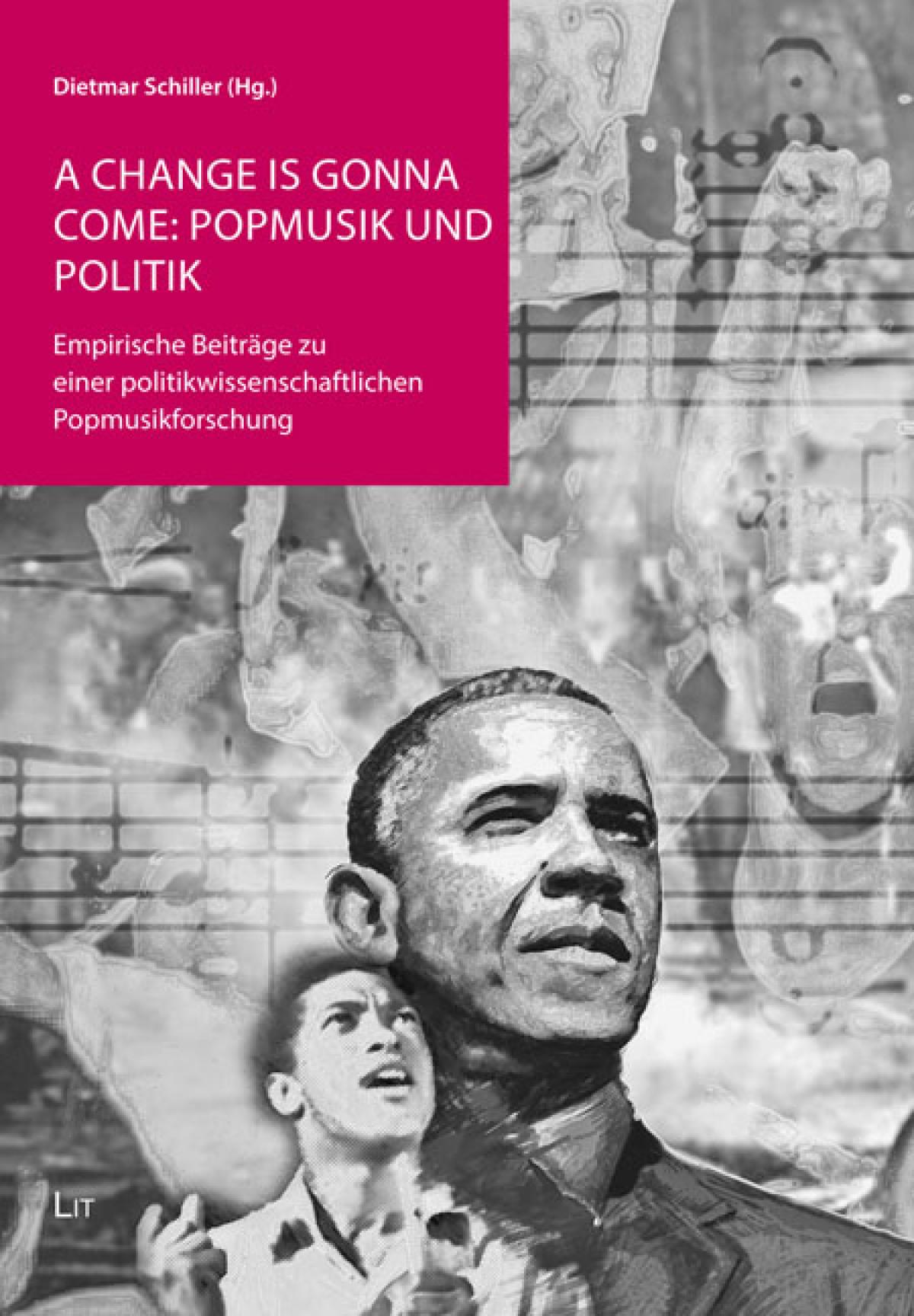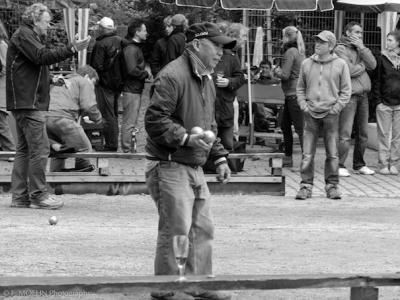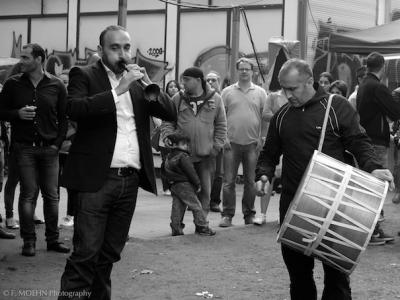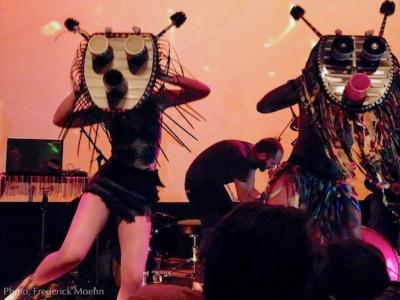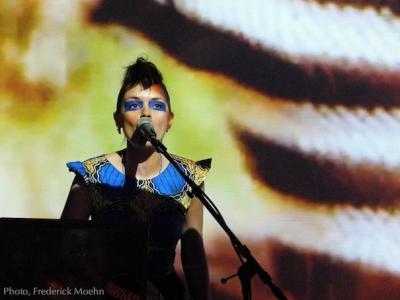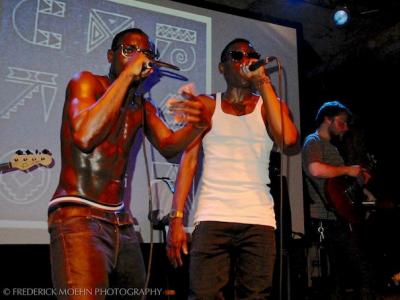The «Lusotronic» festival in May 2013 brought Portuguese electronic music to Berlin's multicultural neighborhood Kreuzberg. The summit meeting was accompanied by films and lectures. For Norient it's an occasion for a deep ethnomusicological insight in the lusotronic postcolonial cultural spaces.
Kreuzberg
It was my first time visiting the Kreuzberg neighborhood of Berlin since I spent about half a year there shortly after the Wall was torn down and reunification began. «You won’t believe how much it’s changed,» a friend who has lived in this part of Berlin all of her working life said to me on the phone before I flew in from London. In fact, the neighborhood did not seem so markedly different to me. Sure, longtime residents lament the rise in real estate prices in recent years as gentrification creeps across the city; packs of foreign students and tourists crowd the neighborhood’s streets and cafes; and there are many more bars than before. But Kreuzberg still has a strong Turkish presence, and it remains a center for leftist political protest. Graffiti covers nearly every wall space, and even a couple of the caravan camps that were there when West Berlin was an island in the Eastern Bloc remain in place (squatting in empty apartment buildings, however, is no longer legal).
Young and old still spend hours playing bocce ball on the weekends in the greens of the Paul-Linke Ufer, along the canal. Perhaps some of the neighborhood’s legendary counterculture is now more posture than passion; but there is still plenty to protest in the Berlin of the Euro era. «There is no quiet hinterland!» proclaimed a bill announcing an anti-fascist demonstration in Buch, just North of Berlin and purportedly a favored neighborhood of right-wingers and neo-Nazis. «Fight racism now!» was the slogan for a protest scheduled to take place two days later at the Reichstag, near the Brandenburg Gate. Other current initiatives in Kreuzberg include protests against refugee deportation and rising rents (see Kotti & Co.), among other things. Recently, the Turkish community appears to have mobilized in solidarity with the protests challenging Prime Minister Recep Tayyip Erdogan in Taksim Square, Istanbul.
Karneval der Kulturen
It was the weekend of the eighteenth annual Karneval der Kulturen – Carnival of Cultures. The main attraction is the Sunday parade through Kreuzberg, but there are also street festivities in the area between the Hallesches Tor overground train station and the Church of the Holy Cross. The area was so crowded with Berliners that it was a challenge to move from one end of it to the other. The festival itself seemed to serve primarily as an occasion to drink, eat, and meet up with friends on the Pentecost holiday. Rather scrappy musical stages were loosely organized around world regions, but few people appeared to be there to hear the scheduled bands; indeed, street performances seemed to draw more enthusiastic audiences.
Lusotronics
But I wasn't in Berlin for the Carnival. I came to attend the Lusotronics festival at Club Gretchen, also at Hallesches Tor, just adjacent to the street festivities. The nightclub occupies a brick building that, from the mid-nineteenth century, purportedly housed the stables of the 1st Guards Dragoon Regiment «Queen Victoria of Great Britain and Ireland,» which fought in the Imperial German Army in the First World War. «The beautiful vaulted ceiling, the delicate columns, are now sounded with beats and bass,» the club website proclaims.
What is Lusotronics? The term combines «Luso,» which essentially means «Portuguese,» with «electronics» to refer to «digital, urban music lifestyles» from the Portuguese-speaking world. The festival, organized by Berlin-based DJ and producer Daniel Haaksman, included musicians from the three largest former Portuguese colonies – Angola, Brazil, Mozambique – plus Portugal, with Lisbon viewed as the main hub of circulation (http://lusotronics.com/about). It focused on genres of dance music «born in the shanty towns of megalopolises such as Rio De Janeiro, Luanda, Maputo, Belém or Lisbon,» produced on relatively inexpensive digital instruments, and distributed globally via the Internet. Genres such as «baile funk, kuduro, tecno brega, funana or ku-house,» the festival description asserts, «represent some of the most promising and future-oriented innovations in worldwide pop and dance culture.»
One might quibble that Lisbon cannot persuasively be considered a hub of baile funk, or that the term ku-house was invented something like five minutes ago (it hasn’t yet earned a Wikipedia entry…), or that the prefix «Luso» is too Portugal-centered for some in the countries on the –ized end of colonization. But the list of DJs and other performers lined up for the festival was exciting. Aside from the musical guests, the agenda also featured four lectures, and the screening of documentary films. Its aims were ambitious: to «deal with the main issues, relations and dynamics of colonial history and post-colonialism, regionalism and globalization, sampling and citation, copyright and creation, internet culture, as well as gender and identity constructions in the digital age» (http://lusotronics.com/about). Whew, that’s enough to make an academic break out in a sweat without even hitting the dance floor.
The setting for the lectures was a nearly pitch dark room behind the main hall. Projected against the brick wall and behind the speakers were images from the national flags of the countries included in the festival, such as the «Order and Progress» slogan from Brazil, the historic shield emblazoned on the Portuguese standard, or Angola’s cog and machete, symbol of the working classes. Although the darkness was a bit odd, the lectures drew engaged audiences who asked follow-up questions of the speakers.
DJ and doctoral research student Stefanie Alisch opened the festival with a keynote address and DJ/producer Benjamin LaBrave spoke after her on Saturday, the first day of the festival. Sunday’s lectures included Andy Cumming’s paper on Tecno brega («From Local Cheese to Global Bass») ahead of the performance of DJ Waldo Squash and Gang do Eletro, and Wolfram Lange on how the «pacification» campaigns that are taking place in the favelas of Rio de Janeiro in anticipation of the World Cup and the Olympic Games have shut down many working class funk bailes. Before describing selected performances, I want to devote some space to the discussions from the first day of lectures, since they help frame the festival.
Lusophone Difference
Benjamin LeBrave is founder of the Akwaaba music label based in Ghana, through which he promotes and distributes electronic dance music from the African continent. He drew from his experience as an international producer and disc jockey (as BBrave) to make observations about what he called lusophonication – «how Lusophone culture swallows and digests local and foreign cultural influences.» He suggested that the local appropriation through mixture (and through remixing) of international influences was especially prevalent in Lusophone contexts (for example, how Angolans have remixed dance tracks from abroad «in a local fashion» in the kuduro genre).
LeBrave sought to explain the postcolonial difference he perceived in Lusophone settings. «If you go out on the streets and do a blind test; if you play a song from Brazil, and a song from Angola, and a song from Portugal for someone,» he said, that listener «will probably notice some kinds of similarities.» This was not the case, in LeBrave’s experience, for the different musical cultures of the Francophone and Angolophone postcolonial world. He elaborated:
If you speak English, the influence of the U.S. [even more than England] is enormous. If you go to Francophone Africa, France has a really big role as well. My experience in Lusophone countries is that it’s a bit more varied. If you go to Angola people are aware of Cape Verdean music, they’re aware of Portuguese music, they’re aware of Brazilian music. I didn’t notice that in Francophone countries. Congo has a heavy influence. Nigeria has a heavy influence, but I don’t feel like it’s as even a playing field as in Lusophone countries… You can make a kuduro hit and you can play it in Bahia. You can play it in Maputo. It makes sense. You can do a baile funk song, [and] you can play it in Luanda. You can play it in Portugal… So I see this Lusophone world as a network that is a bit more even. Every place has its own identity, but there’s this common ground, a common language, and common cultural references that enable the music to travel a bit more easily.
The Lusophone world, LeBrave suggested, is not completely dominated by one country. While it may be almost impossible to test LeBrave’s hypothesis through scholarly research, the idea of a comparatively decentered postcolonial cultural space seems plausible. At the least, Portugal, the former colonizer, can no longer claim a dominant role. (One might even argue that it ceded such a role when the English navy escorted fifteen ships bearing the Portuguese royal court and other elites from Lisbon to Rio de Janeiro to evade the advancing French army in 1807. As Boaventura de Sousa Santos has argued, Portugal, as colonizer, was itself subordinated to England, fostering a kind of colonial condition of in-between-ness in Lusophone spaces; see «Between Prospero and Caliban»).
In such spaces, cultural mixture may have become a kind of modus vivendi that is well suited to today’s globalized settings. «Because the system makes sense,» LeBrave continued in his lecture, «anything can be mashed into it»:
There’s this habit of taking whatever influences and bringing them together, so it’s not so foreign to take, say, a Jay-Z song and make a kizomba or tarraxinha remix. It’s not so weird to take some American pop song and make a baile funk remix. It’s like this matrix that you can put anything you want into, and people are used to it. They’re used to having foreign sounds, and blending them with local elements.
LeBrave’s explanation is probably an overgeneralization; he echoed the Lusotropicalist argument when he suggested that the Portuguese colonizers were «more porous to local people and local culture.» Scholars have disputed the extent to which this was actually the case during the colonial era (which lasted, in the case of Portuguese Africa, until 1974). Moreover, Lusotropicalism, first proposed by the Brazilian sociologist Gilberto Freyre but subsequently embraced by the dictatorial António Salazar régime of Portugal, has been criticized as a convenient discourse for the colonizers (see, for example, M. Moorman, «Music and Lusotropicalism in Late Colonial Luanda»).
A different reading, however, might understand LeBrave as extending the celebrated Brazilian postcolonial discourse of antropofagia, or cultural cannibalism, to an international setting—specifically, to the digitized cyberspace and dance floors through which Portuguese-language mashes and remixes circulate. This is an interesting proposition and one that challenges Brazil’s claims to exceptionalism when it comes to hybridity (see, for example, F. Moehn, «Music, Mixing, and Modernity in Rio de Janeiro»).
In the ensuing discussion, festival organizer Daniel Haaksman responded to an audience member who asked why he structured the event around the legacy of the Portuguese Empire. He «didn’t follow the legacy of the Portuguese empire as such,» Haaksman said. Rather, through his experience as host of the radio show Luso FM, and as a producer of music related to Brazil and Angola, he came to notice «that there were a lot of musical and cultural similarities between all the Portuguese-speaking countries» and that there hadn’t yet been a performance setting that presented these various connections «as a whole.» Moreover, he understood that many musicians in the Lusophone world knew of each other through Soundcloud and social media, but had not had the opportunity to meet each other in person. «Since we have the privilege of living in Berlin, Germany,» Haaksman said, «and we have this system of public funding,» he was able to «fly in people from Mozambique, Angola, [and] Brazil to get together and exchange ideas, to meet each other.» He hoped the festival would bear musical and cultural fruit, he said.
Haaksman acknowledged social dynamics of power and prejudice in Lusophone settings:
You still have hierarchies in the Lusophone world. If you are Brazilian and you go to Portugal, people don’t really look at you very positively. And it’s the same if you are Portuguese and you go to Angola, people spit on you because ‘there comes the former colonizer and now he looks for work.’ So, these hierarchies still exist, but there is the mutual cultural language, and musical language. And this is a very special thing as well. I think it’s quite different from the Francophone world… I think the Lusophone world is more horizontal… Being from Berlin, and from a non-Portuguese-speaking background, I have a very objective and very neutral view on all these phenomena that happen in the Lusophone world. It’s a neutral ground.
The nuance is welcome, but can the organizer of a music festival (with public funding and a financial stake in its success) stand outside of these social dynamics? Haaksman may have had a point when he suggested that were such an event to take place in a Lusophone country the organizers would «first of all want to bring in their friends or their favorite local artists.» But is someone who has produced and distributed albums of Brazilian music (through the label Man Recordings) capable of remaining neutral? Granted, I am revisiting Haaksman’s comments outside of their original context, but they serve to highlight how we may be tempted – problematically, I would offer – to think of Lusophone sound world(s) as fundamentally structured along national or linguistic borders. Of interest is teasing out what «neutral» might really mean in the first place.
Pleasure Politics
Stefanie Alisch is pursuing a PhD at the Bayreuth International Graduate School of African Studies, based on field research in Angola. She was one of the organizers (with Agnela Barros Wilper and Jó Kindanje) of the First International Conference on Kuduro, a seminal meeting that took place in downtown Luanda almost exactly a year earlier. (LeBrave was also one of the speakers there.) In her paper Alisch detailed the social dynamics of kuduro in Lisbon and Luanda and reminded her audience of the importance of the body in performances associated with electronic dance music—in particular, the female body. Alisch is beginning to think of her research in relation to «pleasure politics,» drawing on the work of Joan Morgan, Shayne Lee, and my King’s College London colleague Ananya Kabir (who also participated in the kuduro conference, and who is directing a research project on international dance scenes). The work of these thinkers, Alisch observed, «questions the politics of respectability and challenges morality discourses that perpetuate derogatory readings of performances of female sensuality.»
Viewing the «hip-gyrating dances and explicit sensual lyrics» of Mozambican hip-hop star Dama do Bling, kuduro singer Titica, or funk carioca MC Tati Quebra Barraco through the lens of pleasure politics, Alisch proposed, allows us to see their performances as forms of empowerment without requiring us to attribute explicitly feminist agendas to them. On the other hand, to interpret «the sensually feminine performances of Titica and Dama do Bling as simply flirting with the camera or even as submitting to a male gaze,» she argued, would deprive them «and the personas that they create on stage of the power of writing their own sexual scripts.»
Alisch is reflexively sensitive to the empirical and ontological pitfalls of being a foreign researcher on the ground in a so-called developing nation. «What I’ve noticed during the research trips to Angola, [is that] it’s easy to go there and kind of slip into judgmental mode and [reflect]… ‘Look at the chaos.’ I think it’s very difficult to offer this kind of analysis as a foreign researcher because the whole world is responsible for these situations. So I like to offer a reading that kind of enhances the agency of those that make popular music in Angola, if you will.» As a practitioner (DJ Stef the Cat) and musicologist Alisch is taking an approach to emergent electronic dance scenes that is a blend of thick participation (as developed by ethnologist Gerd Spittler) and practice-based research that embraces dancing and deejaying as means to access implicit knowledge.
Selected Highlights from the Festival
The Angolan kuduro MC Titica has certainly written her own sexual script, for she is purportedly the first openly transsexual singer in the country. She has quite a media presence there, and a growing one abroad (see, for example, this BBC article about her). After a hip-hop set from Dama do Bling, Titica took the stage around 1 AM or so on the first night of the festival. In her song «Kusi di Pole» she pumped her breasts (which she has said she acquired in Brazil, plastic surgery capital of the world) in a dance move synchronized with the horn samples. The song title is a phonetic spelling for the French cuisse de poulet – chicken thigh – which is evidently meant to suggest that the dancer is so sexy that one may want to bite her! The allusion to French in the title – and the musical groove too – suggest a Congolese influence for this song (see video clip). Titica enjoyed an intimate rapport with the audience (some of whom reached their hands out, pretending to pump Titica's breasts), even somewhat incongruously sitting in a chair for part of her set. Interestingly, despite admitting to having been discriminated against in Angola for her sexuality, Titica seems to prefer to think of this aspect of her identity as incidental to her musical career.
I could not see all of the performers at the festival, so I will only comment on a few here; I hope that the remaining artists will forgive me for not specifically mentioning them (please see the Lusotronics artists list for more information). Among those I did see, Batida, a creation of Lisbon-based Portuguese-Angolan Pedro Coquenão, was one of the highlights. For the show in Gretchen Batida included guest artists Ivo Costa on drums, André Silveira and Oren dos Jahcoozi on electric bass, Luanda-based Sacerdote as MC for three songs (you can see Sacerdote’s video of his «Falaste o que» here), Catarina Limão as video artist, dancer Bernadino Tavares, and Bruno Lobato orchestrating the sound. Coquenão played the Angolan dikanza and controlled the electronic loops, effects, and percussion.
The dikanza is a bamboo scraper that ranges in length – I’ve seen meter-long ones, or more – and it is a kind of icon of Angolan popular music. The ex-pat singer Bonga has made it his signature instrument. One of Paulo Flores’s touring percussionists, Jorge Mulumba, demonstrated the instrument to me in Combatentes, Luanda. You can hear it prominently on the beginning of Batida’s «Bazuka,» and at 1 min. 45 sec. into «Tirei o chapéu mixtape.» (Other acoustic instruments Coquenão sometimes performs live include the marimba and the kissange, a thumb piano.)
Batida’s grooves sample from older Angolan popular music, primarily from the 1970s, a period when electric guitar was often a featured instrument. Coquenão mixes these samples with beats such as kuduro, and he presents a well-choreographed multi-media stage show that is half political theater, half party. Limão cooly directed the video show on the large screen behind her, wearing quasi-futuristic blue eye makeup, a top with a vaguely African pattern, and a mini-skirt that may have been intended for Latin ballroom dancing. I’d listened to Batida's album but the live multi-media show, I discovered, is integral to Coquenão’s expressive conceptualization of Angola and its music.
The group called Throes + The Shine followed Batida. This young, all-male agglomeration based in Porto, Portugal, consists of a more-or-less hardcore rock rhythm section of Marco Castro (guitar and synthesizers), Igor Domingues (drums and percussion), and João Brandão (bass guitar), who are Throes, and Angolan MCs André do Poster and Diron, who comprise The Shine. Apparently, they were two separate entities when they decided to join forces to create «rockuduro» in 2010. In summer 2012, Throes + The Shine performed at major rock festivals in Europe, avoiding the world music label and reaching audiences beyond Portuguese-speaking contexts. Their engaging set brought intense energy to the venue around 4 AM.
On Sunday night, DJ Waldo Squash and Gang do Eletro (MCs/singer-dancers Maderito, Keila Gentil, and William Love) stole the show. Cummings’ paper discussed tecno-brega and introduced videos from various artists, including Gang do Eletro, but he seemed to want somehow to redeem such musicians from «bad taste» and «unsophisticated» cheesiness (brega). Gang do Eletro, in my opinion, have nothing at stake in that discussion: their music and their colorful glow-in-the-dark stage show were good fun. They delivered their «electromelody» with smiles and wit. They perform a signature move on the song «Velocidade do Eletro,» in which there is a refrain that repeats the word «treme,» meaning «shake.»
First the MCs sing it on the half note for four bars, then on the quarter note for four bars, then eighth notes, and then «tre-me que tre-me que tre-me» on sixteenth note – repeated – which quite effectively assigns vocables to the ubiquitous 3 + 3 + 2 dance rhythm (say «treme que treme que treme» and you’re voicing one of the fundamental rhythms of much Latin American music). But what is it that Gang do Eletro shake? Not the hips or rear but the shoulders (you can see the video here).
In contrast to the Southeast of Brazil, in Belém do Pará – the center of tecno-brega – the Caribbean music influence is prominent. The relatively slow duple meter cumbia, for example, has been incorporated into tecno-brega (via tecno-cumbia), so the sound is quite distinct from, say, funk carioca. However, similarly to funk carioca, at the center of the development of tecno-brega has been large sound systems designed for public dance parties. (For more on the sixty-year history of these aparelhagens, as they are called, see the Projeto Sonoro Paraense, organized by Júnior Almeida and Darien Lamen.)
Over 3,000 km straight south from Belém is Curitiba, the city of the Brazilian trio Bonde do Rolê (with Pedro D'Eyrot, Laura Taylor as MCs, and Rodrigo Gorky as MC/DJ). Their performance and musical arrangements are loopy (and I don’t just mean in the sense of grooves that are looped in a computer). «Not many people know what Bonde Do Rolê are singing about,» the artist information posted on the Lusotronics web page states, «but everyone keeps singing along; they’re the third world Black Eyed Peas.»
The analogy is weak; perhaps more apt is the title of their third and most recent album, produced by Diplo and Filip Nikolic: Tropicalbacanal. You can hear the influence of funk carioca and a little samba in their grooves, but also of many other sounds from Brazil and elsewhere (their song «Kanye,» for example, is an electro-forró with accordion samples and the Auto-tune effect on the vocal). There’s a good bit of cafonice in their music and in their bright, multi-colored light-footed bump-and-grind show. The word can be translated roughly as «tackiness,» but that’s not entirely accurate because there can also be a sense of performative irony in cafonice, and a kind of abundance of information (perhaps it is a «late hipster» aesthetic). In any event, Bonde de Rolê’s music is tropical bacanal party music with a certain inanity to it (for example, «Banana Woman»). Whereas Batida and Throes + The Shine brought some spectators on stage to dance a bit, the Bonde de Rolê MCs abandoned the stage for a few minutes early in their set to mingle with the audience.
Concluding Observations
The Lusotronics festival is an indication of the gradually growing global presence of music in Portuguese – including, increasingly, electronic music. In some ways, multicultural and countercultural Kreuzberg did seem like the perfect place for the event. I could imagine a similar festival being mounted in New York, or perhaps London, but it would be different. There is, in fact, an annual Lusophone music festival that takes place in Galicia, Spain, where the language Galego, closely related to Portuguese, is spoken. The Brazilian and Angolan musicians I have interviewed for my research into that festival (Cantos na Maré), also described this part of the Iberian Peninsula as a kind of neutral territory – to recall Haaksman’s term – not tainted by the legacy of Portuguese colonialism. Galicia, however, is known for folk and acoustic music; electronica and performances with DJs and MCs are better suited to a venue like Club Gretchen in Kreuzberg.
Flying in artists from the former territories of one of the great seafaring empires costs money, and the public funding can only extend so far. Unemployment is reportedly 12% in this «poor but sexy» city, as mayor Klaus Wowereit once called it. Since the festival did not celebrate a single nation, I suspect that it would have been difficult to secure financial support from Portugal, Brazil, Mozambique, or Angola. The entrance fee of 15€ (or 25€ for both days) was perfectly reasonable, yet Berliners not already hip to lusophonication, not alert to the emergence of the Portuguese-language urban electronic dance music matrix, may have stuck with the (free) Carnival of Cultures. Let us hope that more opportunities arise for this kind of event.
If we concede LeBrave’s point that no single country necessarily dominates the Lusophone space, there are nevertheless, as Haaksman noted, powerful hierarchies and modes of difference still at play in it. Some of these are not particular to the Portuguese-speaking world, and some of them are most pronounced within individual countries. It was sometimes hard not to notice, for example, how race inflects the geography of lusophonication and its advocates. Consider the white rock group of Throes, from Portugal, joined with the pair of black Angolan MCs, the Shine, or the all-white Bonde de Rolê from the South of Brazil, where massive slave labor plantations were relatively scarce and where there was significant European immigration in the late nineteenth and early twentieth centuries. Or one may have hoped for more racial diversity in the selection of lecturers. Geographies of class are also ingrained in the Lusophone soundscape (why should brega be «cheesy» while the wacky mixtures of Bonde do Rolê are read as cutting edge cosmopolitanism?). The point is not to reinscribe or essentialize difference, but rather to think about how race, class, gender, music, technology (including even the technologies that enable gender bending), and the performative body interpolate each other in the Lusophone soundscape. On this score, Lusotronics provided much groove for thought.
Acknowledgments
Thanks to Daniel Haaksman and all the musicians who participated in Lusotronics for letting me make photographs and videos of the performances. (Video was shot on a hand-held iPhone and the audio tended to be heavily distorted from the proximity to the speakers. I therefore only include a few short clips here. Photos were shot of a Fujifilm X20). Thanks likewise to Stefanie Alisch for comments on a draft of this post, to Benjamin LeBrave for allowing me to cite from his lectures, and to Barbara Philipp for hosting me in Berlin. Finally, I am grateful to Theresa Beyer from the editorial staff of Norient for help in posting this.
I welcome insights, reflections, and queries from readers of this article.
